- News
- Reviews
- Bikes
- Accessories
- Accessories - misc
- Computer mounts
- Bags
- Bar ends
- Bike bags & cases
- Bottle cages
- Bottles
- Cameras
- Car racks
- Child seats
- Computers
- Glasses
- GPS units
- Helmets
- Lights - front
- Lights - rear
- Lights - sets
- Locks
- Mirrors
- Mudguards
- Racks
- Pumps & CO2 inflators
- Puncture kits
- Reflectives
- Smart watches
- Stands and racks
- Trailers
- Clothing
- Components
- Bar tape & grips
- Bottom brackets
- Brake & gear cables
- Brake & STI levers
- Brake pads & spares
- Brakes
- Cassettes & freewheels
- Chains
- Chainsets & chainrings
- Derailleurs - front
- Derailleurs - rear
- Forks
- Gear levers & shifters
- Groupsets
- Handlebars & extensions
- Headsets
- Hubs
- Inner tubes
- Pedals
- Quick releases & skewers
- Saddles
- Seatposts
- Stems
- Wheels
- Tyres
- Health, fitness and nutrition
- Tools and workshop
- Miscellaneous
- Tubeless valves
- Buyers Guides
- Features
- Forum
- Recommends
- Podcast
TECH NEWS
More disc road bikes from Salsa, Wilier, AX Lightness, Haibike and others at Eurobike 2013
Okay, we know we said there weren't as many disc-braked road bikes at Eurobike as we were expecting, but when the day one hangover cleared and we had another look round, it turned out there were a lot more. The flood might not be quite up to our nipples yet, but it's definiitely well over our knees. Here, then is part two of our look at disc-braked road bikes.
The bigger manufacturers like Merida, Specialized and Cannondale might have grabbed the headlines, but there's a number of smaller manufacturers showing some smart looking bikes.
Salsa
Not a new bike, but a new paint job for Salsa's rather lovely Colossal. Released about a year ago or so, the Colossal is a disc-equipped road bike, with a titanium or steel frame and an Enve carbon fork sliding into the tall headtube.
Salsa have pitched the geometry at the rider who favours a bit of comfort and balance over all-out race aggressiveness.
AX Lightness
The AX Lightness stand is always worth a visit at Eurobike for their collection of extremely lightweight carbon components. This year AX Lightness had this new disc road bike, based on the Vial we saw last year but with a frame built around disc brakes.
They've very neatly recessed the SRAM Red hydraulic disc caliper into the chainstays. The new fork has a bolt-thru axle, something we've only seen on a very small handful of bikes this week. Out back is a regular quick release axle.
With its huge box section main tubes, kinked chainstays and a top tube flowing seamlessly into the seatsays, it's real head-turner.
Falkenjagd
This lovely looking bike is the Falkenjagd (try typing that with a hangover) Aristos RS, a titanium disc-equipped road bike that we spotted on the Tune stand. As such, it was fully decked out with Tune components, including Tune Prince/Princess hubs. With a SRAM Red 22 groupset, including hydro brakes, the all-up bike weight is a claimed 7.4kg.
Very few of the road disc bikes we've spotted have bolt-thru axles, this bike has them front and rear (similar to the Storck). Out back is a Syntace X-12 bolt-thru setup (a 12mm axle standard that is common on mountain bikes), with the disc mounted atop the seat stays, and a stiffening brace inside the dropouts.
An obstacle to disc brakes being fully embraced on road bikes is the lack of parts. The Whiskey No.9 carbon fork is one of the few aftermarket disc forks available to smaller bike manufacturers who perhaps don't have the deep pockets required to produce their own fork. This fork is made from unidirectional carbon and has a tapered steerer tube with post mounts, with capacity for up to 185mm rotors. There's space for 28mm tyres and it has a 15mm bolt-through axle.
Haibike
This is Haibike's Q Race RX Pro, which combines a carbon fibre frame with a full Shimano Ultegra groupset, RX31 wheels and their new hydraulic disc brakes. Where most disc road bikes have the rear disc caliper located inside the rear stays, Haibike have placed it on the outside of the stays just above the dropout. The frame is Di2 compatible and the 'comfort geometry' gives an indication of the type of riding the bike is intended for.
Also on the Haibike stand was this Noon RX carbon cyclocross model, with a bolder than bold paint finish. Shimano CX75 mechanical disc brakes, with 160mm rotors front and rear, are fitted to Novatex CXD-D hubs and the all-up weight is a claimed 7.9kg.
Wilier
The latest model from Italian company Wilier is this Cento1 SR Disc, seen here with Shimano R785 hydraulic discs. They claim it's not a mere adaptation of the standard Centr1 SR frame, but a ground-up redesign to fully integrate the disc brakes. The rear triangle is new, and they've fixed the disc caliper to the top of the chainstay.
The frame is made from high modulus 60-ton carbon fibre with some massively oversized tube profiles and similarly oversized fork. Cables and wiring are routed internally, with a particularly neat downtube entry point for the gear cables.
A lot, well most, disc road bikes we've seen this week have dedicated disc seatstays, with a complete absence of a brake bridge. Not so with the Cento1 SR Disc, with the brake bridge showing a redundant caliper brake mount.
David worked on the road.cc tech team from 2012-2020. Previously he was editor of Bikemagic.com and before that staff writer at RCUK. He's a seasoned cyclist of all disciplines, from road to mountain biking, touring to cyclo-cross, he only wishes he had time to ride them all. He's mildly competitive, though he'll never admit it, and is a frequent road racer but is too lazy to do really well. He currently resides in the Cotswolds, and you can now find him over on his own YouTube channel David Arthur - Just Ride Bikes.
Latest Comments
- FionaJJ 9 min 15 sec ago
Unfortunately, a lot of these local groups supposed to be representing local (business) interests tend to be disproportionately filled with a...
- eburtthebike 12 min 33 sec ago
Never! I'm reporting you to somebody in authority for trying to restrict my freedom of speech. It's every true born Englishman's proudest...
- Kendalred 20 min 15 sec ago
That bike thief must have been thorough - they nicked the paintwork as well!
- Wingguy 28 min 49 sec ago
Indeed, there was no outrider or marshal at that junction trying to stop them. Seems like an organisational issue.
- Slartibartfast 43 min 18 sec ago
Bloody self driving cars at it again. https://www.gloucestershirelive.co.uk/news/celebs-tv/morrisons-car-park-...
- David9694 59 min 16 sec ago
8 months on from your post and still no MoT. He would not be able to renew his badge (annual, I think) without one....
- Robert Hardy 1 hour 20 min ago
Given the he pathetic willingness of a court to reduce the penalty for the serial recidivist speed offender Steve Coogan what hope is there for...
- Jetmans Dad 1 hour 31 min ago
Vinyl records are expensive to produce, and sell a tiny fraction of the amount sold on CD and streaming. It's called economies of scale ... and no...
- mdavidford 2 hours 27 min ago
There's permeable and then there's permeable, though. Even a permeable driveway is likely to increase runoff vs the garden it replaced - just not...


























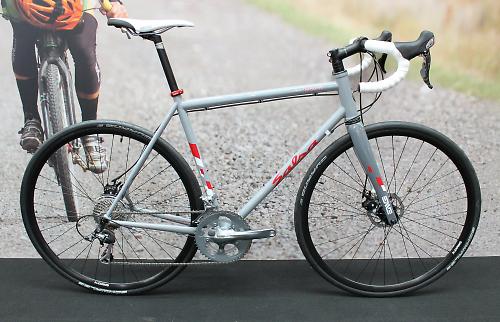

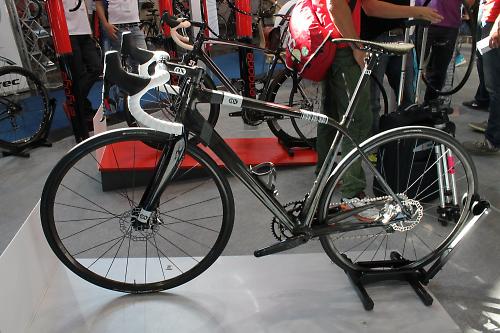
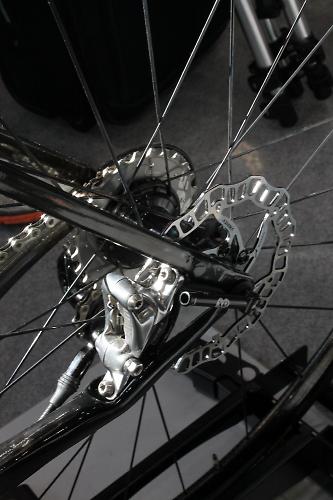
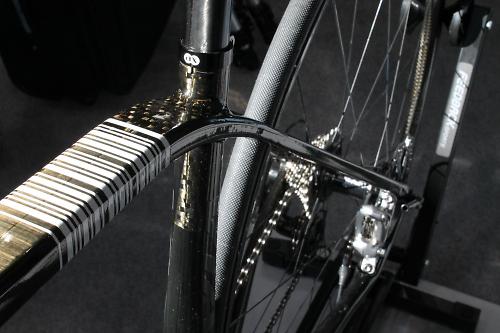

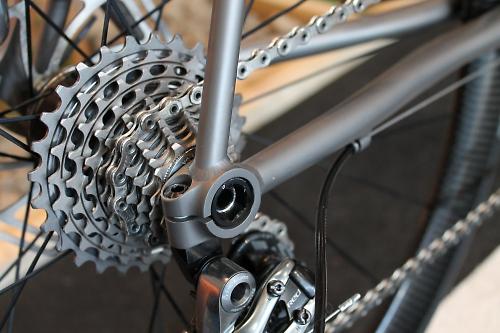
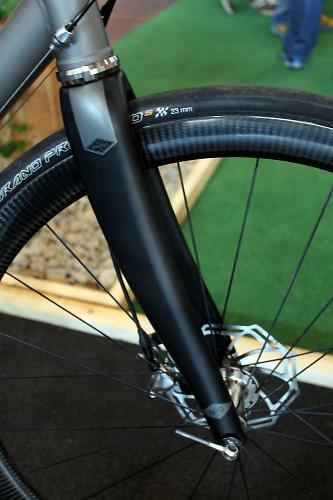
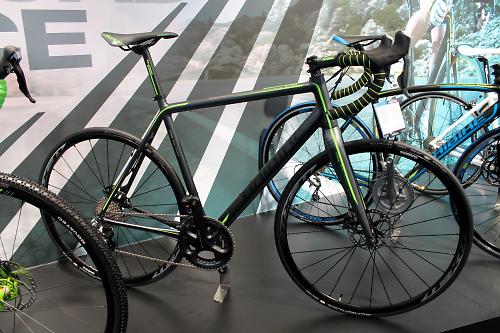
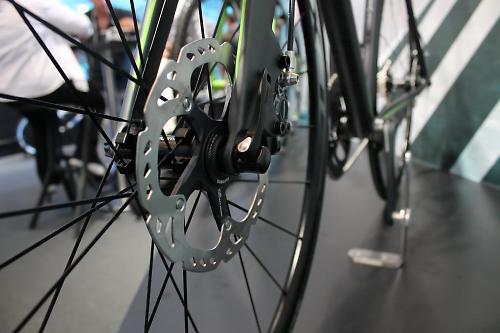

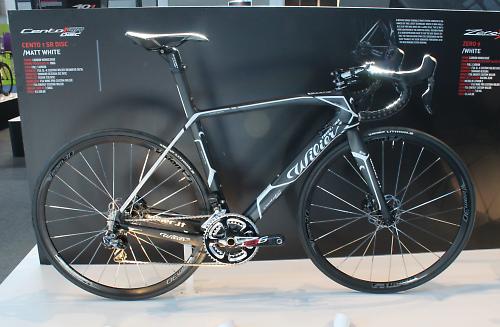


Add new comment
13 comments
+1 on the request for more aftermarket disc wheelset info please. I see mention of Mavic Crossone29 wheels on the Canyon bike, but there's no mention of them on Mavic's website and Google turns up virtually nothing.
Something that helps support the inherent flexibility of a telescopic suspension fork. Works well on some rear triangles or swing arms of suspension bikes that aren't a naturally rigid design. They can create a more secure junction between wheel and fork legs (that depends on how the axle works - eg QR15 doesn't add any more clamp force or contact area between hub ends and dropout, just a larger fork end-hub axle interface), they should more secure, but if you want a stiffer front end with a light, rigid fork and wheel there's other equally or more effective things that can be done. But a thru-axle can work well, easily, plus is more visible and 'new'. Excuse any cynicism - a common post-Eurobike effect : )
Maxles really should be standard on front and rear wheels, eliminating the current QR system, MTB's still aren't there after 20 years of disc brakes, with road bikes taking the leap to disc, they should be able to miss any evolution and go straight to the current standard.
For the frame designs, sticking a disc mount on the rear is just ugly on a road bike, on the inside/chainstay looks neat, and if you need mudguards, it's a much more sensible place.
Good to see that Disc brakes are becoming more of an option, I've used a disc road bike for the last 5 years and it's been a great all-year commuter (and CX bike on occassions).
For the transition to road bikes though I think the rotors need to look "pretty", whether that means smaller or narrower or carbon or something else I don't know!
Great to see all these disc equipped road bikes, turns out I was only two and a half years ahead of the curve with my first winter bike (Salsa Vaya). There were no "factory" road wheels available for discs back then, so I had a pair of Mavic Open Pros built on to some Hope Evo hubs. They're very reliable but rather heavy and not at all "aero".
I'm now on disc equipped road bike number 2 (Lynskey Sportive), which is much lighter than the Salsa but am still using the same wheels, which I feel to be much slower than the Ksyrium SLs on my Cervelo. Could you guys please show us any nice, fast aftermarket "factory" wheels for disc equipped road bikes that you see at Eurobike?
Thanks,
James
Have you seen the new Canyon cx bike in the flesh? Based on the ultimate Al frame. Looks pretty tempting.
excuse my ignorance, could somebody explain what a bolt-through axle is, and why it appears mostly on the front?
Bolt through axels are typically 15mm or 20mm thick versions of a standard quickrelease. The are used on on MTB's fork to strengthen the lower half of the work against torsional forces created in cornering and the non-symetical forces created by having a disc break on one side only. Lees of an issue on most MTB's cause of the thingness of the lower stanchions so is only seen on bike designed to make more stress really.
Hope that helps.
Edit: they are also becoming more commonly used in the rear in smaller sizes.
It's a hollow axle that slides into the lever side dropout like a normal QR but then screws directly into the fork leg/dropout on the opposite side. Also the lever doesn't have a camming action, it's basically a handle for the screwing part that then folds up out of the way when done and ends up looking like a QR.
long-ish travel MTB suspension forks can be quite flexy so it's an attempt to stiffen the whole front end up, which is better for hammering it over, like, gnarly terrain. Dude.
You don't see them so much on the rear I guess because a) it's stiffer anyway at that end, and b) a bit of flex isn't as important.
The points above around increasing steering precision on otherwise flexy MTB suspension forks are all correct and valid, but there is another very important reason that a lot of manufacturers seem to be overlooking.
When the brake is positioned behind the axle, it acts as a pivot point itself as soon as it is applied, in turn causing the axle to be pulled downwards, and in a worst case scenario, ripping the wheel out of the fork dropouts. If you can't envisage this, try the following:
- Hold a bike wheel upright by the QR in your left hand
- Spin the wheel quickly anticlockwise
- Stop the wheel by grabbing the tyre at the 3 o'clock position
You will feel the wheel pull downwards at the axle in your left hand.
It is also worth noting that the smaller the disk, the greater the effect (the 140 standard being touted for road bikes is comparatively uncommon in MTB circles, most run 160, 180 or even 210). So road bikes have greater potential risk.
The argument around whether it was possible to eject an MTB wheel this way went on for a long while, and eventually came to a head with the unfortunate Russ Pinder case, a rider who was sadly left paralysed after a front wheel ejection, and went up against Fox forks in court.
The case was settled out of court, and the extensive research and findings never published, but QRs became more marginalised by most MTB fork manufacturers from that point onward.
There is more reading on the Singletrack forum: http://singletrackworld.com/forum/topic/pinder-v-fox
Brant Richards' (Planet X, On-One) post at the top of page 2 seems well measured, and speaks sense - he deems a good quality QR and a large rotor as safe. But in our world of weight obsession there will be people running 140mm disks with spindly skewers, and in my mind that is a risk that's not worth taking - especially when the 15mm axle standard is so good.
Also worth noting that Cy Turner put the disk mount in front of the axle on the right hand fork leg when designing the original Cotic Roadrat, for this very reason.
To me that AX looks, frankly, minging. Never been a massive fan of the compact geometry shape, and that's just taking it to extremes - it's practically BMX-shaped.
If they ditched a couple of decals, the Willier would look fantastic (especially in that colour scheme) but indeed why leave the brake bridge in?
Maybe for the race number
So if the Willier is a ground up design with new rear triangle, Why did they leave the brake bridge in???